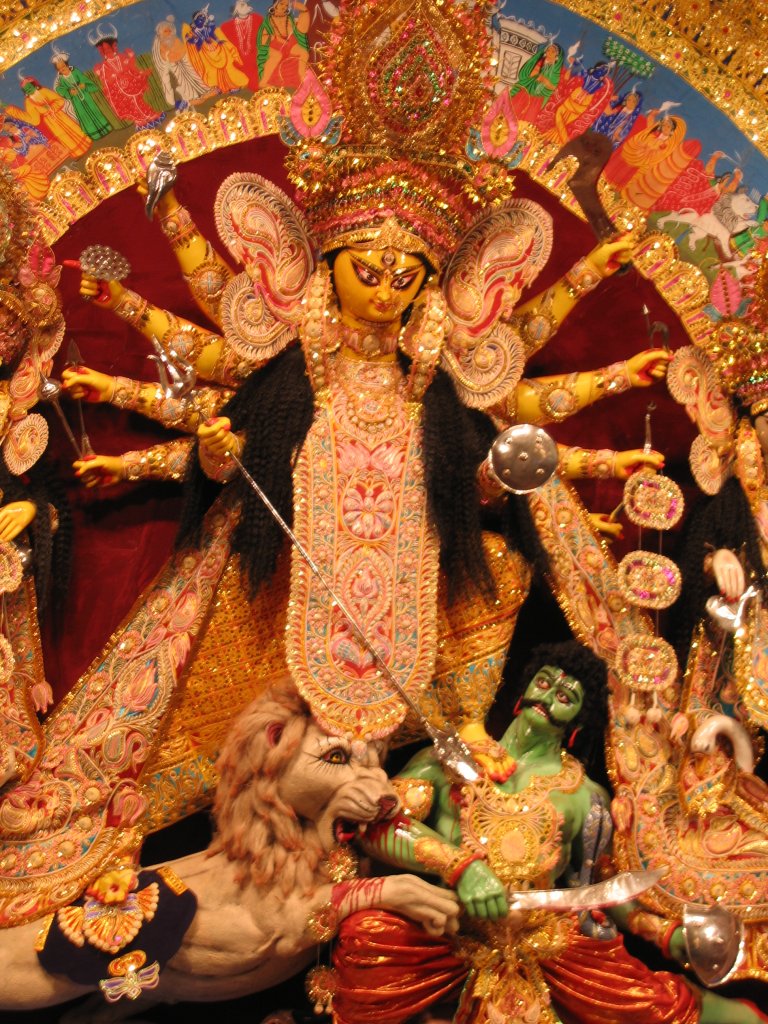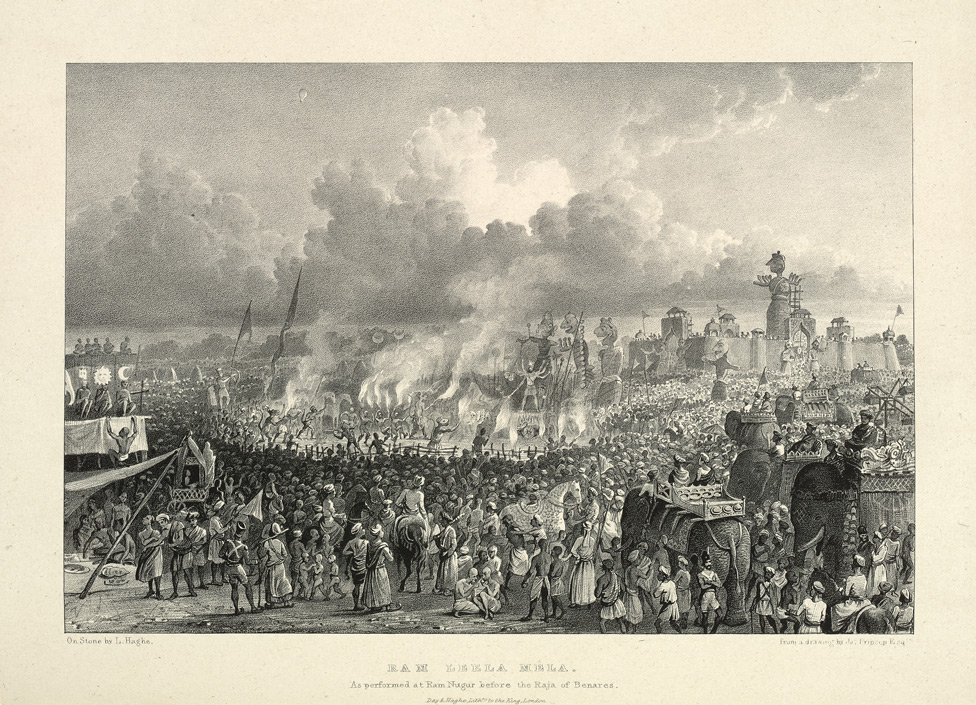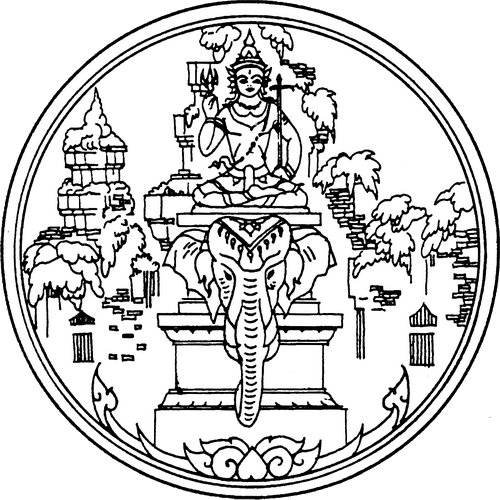|
Devi Talab Mandir
Devi Talab Mandir is a Hindu temple, located in Jalandhar, Punjab, India. The temple is devoted to Goddess Durga and is visited by thousands of pilgrims every year. It is regarded as one of the 51 Shakti Pithas in India. A model of the Amarnath Temple, dedicated to God Shiva, is located within the temple complex. There is an old temple dedicated to Goddess Kali located next to the Mandir. One of the main attractions of the temple is an ancient tank that holds great religious significance for Hindu Hindus (; ; also known as Sanātanīs) are people who religiously adhere to Hinduism, also known by its endonym Sanātana Dharma. Jeffery D. Long (2007), A Vision for Hinduism, IB Tauris, , pp. 35–37 Historically, the term has also be ... devotees. The temple has intricate gold work both inside and on its top. Places of interest * Ma Durga Murti * Charitable Hospital * Amarnath Cave * Vaishno Devi Cave * A Pond * Food Canteen * Kali Mata Mandir * Ram Hall * Hari Va ... [...More Info...] [...Related Items...] OR: [Wikipedia] [Google] [Baidu] |
India
India, officially the Republic of India, is a country in South Asia. It is the List of countries and dependencies by area, seventh-largest country by area; the List of countries by population (United Nations), most populous country since 2023; and, since its independence in 1947, the world's most populous democracy. Bounded by the Indian Ocean on the south, the Arabian Sea on the southwest, and the Bay of Bengal on the southeast, it shares land borders with Pakistan to the west; China, Nepal, and Bhutan to the north; and Bangladesh and Myanmar to the east. In the Indian Ocean, India is near Sri Lanka and the Maldives; its Andaman and Nicobar Islands share a maritime border with Thailand, Myanmar, and Indonesia. Modern humans arrived on the Indian subcontinent from Africa no later than 55,000 years ago., "Y-Chromosome and Mt-DNA data support the colonization of South Asia by modern humans originating in Africa. ... Coalescence dates for most non-European populations averag ... [...More Info...] [...Related Items...] OR: [Wikipedia] [Google] [Baidu] |
Punjab, India
Punjab () is a States and union territories of India, state in northwestern India. Forming part of the larger Punjab, Punjab region of the Indian subcontinent, the state is bordered by the States and union territories of India, Indian states of Himachal Pradesh to the north and northeast, Haryana to the south and southeast, and Rajasthan to the southwest; by the Indian union territory, union territories of Jammu and Kashmir (union territory), Jammu and Kashmir to the north and Chandigarh to the east. To the west, it shares an international border with the identically named Pakistani province of Punjab, Pakistan, Punjab, and as such is sometimes referred to as East Punjab or Indian Punjab for disambiguation purposes. The state covers an area of 50,362 square kilometres (19,445 square miles), which is 1.53% of India's total geographical area, making it List of states and union territories of India by area, the 19th-largest Indian state by area out of 28 Indian states (20th larges ... [...More Info...] [...Related Items...] OR: [Wikipedia] [Google] [Baidu] |
Jalandhar
Jalandhar () is a city in the state of Punjab, India, Punjab in India. With a considerable population, it ranks as the List of cities in Punjab and Chandigarh by population, third most-populous city in the state and is the largest city in the Doaba region. Jalandhar lies alongside the historical Grand Trunk Road and is a well-connected junction for both rail and road networks. The National Highway 1 (India), National Highway 1 (NH1), crosses Jalandhar, further enhancing its connectivity. The city is located northwest of the state capital Chandigarh, southeast of the city of Amritsar, and north of Ludhiana. The national capital, Delhi, is approximately . History The history of Jalandhar District comprises three periods — ancient, medieval and modern. Ancient The city may be named after Jalandhara, a Nath Guru who was from here. The city was founded by Devasya Verma as mentioned in the Vedas. Other possibilities include that it was the capital of the kingdom of Lava (Ra ... [...More Info...] [...Related Items...] OR: [Wikipedia] [Google] [Baidu] |
Durga
Durga (, ) is a major Hindu goddess, worshipped as a principal aspect of the mother goddess Mahadevi. She is associated with protection, strength, motherhood, destruction, and wars. Durga's legend centres around combating evils and demonic forces that threaten peace, prosperity, and dharma, representing the power of good over evil. Durga is believed to unleash her divine wrath against the wicked for the liberation of the oppressed, and entails destruction to empower creation. Durga is seen as a motherly figure and often depicted as a beautiful woman, riding a lion or tiger, with many arms each carrying a weapon and often defeating demons. She is widely worshipped by the followers of the goddess-centric sect, Shaktism, and has importance in other denominations like Shaivism and Vaishnavism. The most important texts of Shaktism, Devi Mahatmya and Devi Bhagavata Purana, revere Devi (the Goddess) as the primordial creator of the universe and the Brahman (ultimate truth and reali ... [...More Info...] [...Related Items...] OR: [Wikipedia] [Google] [Baidu] |
Navratri
Navaratri () is an annual Hindu festival observed in honor of the goddess Durga, an aspect of Adi Parashakti, the supreme goddess. It spans over nine nights, first in the month of Chaitra (March/April of the Gregorian calendar), and again in the month of Ashvin (September–October). It is observed for different reasons and celebrated differently in various parts of the Hindu Indian cultural sphere. Theoretically, there are four seasonal ''Navaratris''. However, in practice, it is the post-monsoon autumn festival called Sharada Navaratri. There are 2 Gupta Navaratris or "Secret Navaratris" as well, one starting on the Shukla Paksha Pratipada of the Magha Month (Magha Gupta Navaratri) and another starting in the Shukla Paksha Pratipada of Ashadha Month. Etymology and nomenclature The word ''Navarātram'' means "a period of nine nights" in Sanskrit, ''nava'' meaning "nine" and ''ratri'' meaning "night". Dates and celebrations In the eastern and northeastern states of ... [...More Info...] [...Related Items...] OR: [Wikipedia] [Google] [Baidu] |
Durga Puja
Durga Puja (ISO 15919, ISO: , ), also known as Durgotsava or Shaaradotsava, is an annual festival originating in the Indian subcontinent which pays homage to the Hinduism, Hindu goddess Durga, and is also celebrated because of Durga's victory over Mahishasura. It is the biggest festival of Bengali Hindus and the Indian state of West Bengal. Durga Puja in Kolkata, Durga Puja as celebrated in Kolkata, West Bengal's capital city, was inscribed on the UNESCO Intangible Cultural Heritage Lists, intangible cultural heritage list of UNESCO in December 2021. In addition to West Bengal, Hindu Bengalis are native to Bangladesh and Indian state of Tripura, Barak Valley, Assam (Barak Valley), Jharkhand and Kosi-Seemanchal, Bihar (Kosi-Seemanchal); Therefore, Durga Puja is performed with great devotion in these places as well. The festival is observed in the Indian calendar in the month of Ashwin, Ashvin, which corresponds to September–October in the Gregorian calendar. Durga Puja is ... [...More Info...] [...Related Items...] OR: [Wikipedia] [Google] [Baidu] |
Hindu Temple
A Hindu temple, also known as Mandir, Devasthanam, Pura, or Kovil, is a sacred place where Hindus worship and show their devotion to Hindu deities, deities through worship, sacrifice, and prayers. It is considered the house of the god to whom it is dedicated.; Quote: "The Hindu temple is designed to bring about contact between man and the gods of Hinduism religion" (...) "The architecture of the Hindu temple symbolically represents this quest by setting out to dissolve or decrease the boundaries between man and the divine". Hindu temple architecture, which makes extensive use of squares and circles, has its roots in later Vedic traditions, which also influence the temples' construction and symbolism. Through astronomical numbers and particular alignments connected to the temple's location and the relationship between the deity and the worshipper, the temple's design also illustrates the idea of recursion and the Microcosm–macrocosm analogy, equivalency of the macrocosm and t ... [...More Info...] [...Related Items...] OR: [Wikipedia] [Google] [Baidu] |
Hindu Deities
Hindu deities are the gods and goddesses in Hinduism. Deities in Hinduism are as diverse as its traditions, and a Hindu can choose to be polytheistic, pantheistic, monotheistic, monistic, even agnostic, atheistic, or humanist. Julius J. Lipner (2009), Hindus: Their Religious Beliefs and Practices, 2nd edition, Routledge, , p. 8; Quote: "(...) one need not be religious in the minimal sense described to be accepted as a Hindu by Hindus, or describe oneself perfectly validly as Hindu. One may be polytheistic or monotheistic, monistic or pantheistic, even an agnostic, humanist or atheist, and still be considered a Hindu." The terms and epithets for deities within the diverse traditions of Hinduism vary, and include Deva, Devi, Ishvara, Ishvari, Bhagavān and Bhagavati. The deities of Hinduism have evolved from the Vedic era (2nd millennium BCE) through the medieval era (1st millennium CE), regionally within Nepal, Pakistan, India and in Southeast Asia, and across Hinduism ... [...More Info...] [...Related Items...] OR: [Wikipedia] [Google] [Baidu] |
Pilgrim
The asterisk ( ), from Late Latin , from Ancient Greek , , "little star", is a typographical symbol. It is so called because it resembles a conventional image of a heraldic star. Computer scientists and mathematicians often vocalize it as star (as, for example, in ''the A* search algorithm'' or '' C*-algebra''). An asterisk is usually five- or six-pointed in print and six- or eight-pointed when handwritten, though more complex forms exist. Its most common use is to call out a footnote. It is also often used to censor offensive words. In computer science, the asterisk is commonly used as a wildcard character, or to denote pointers, repetition, or multiplication. History The asterisk was already in use as a symbol in ice age cave paintings. There is also a two-thousand-year-old character used by Aristarchus of Samothrace called the , , which he used when proofreading Homeric poetry to mark lines that were duplicated. Origen is known to have also used the ast ... [...More Info...] [...Related Items...] OR: [Wikipedia] [Google] [Baidu] |
Shakti Pithas
The Shakta pithas, also called Shakti pithas or Sati pithas (, , ''seats of Shakti''), are significant shrines and pilgrimage destinations in Shaktism, the mother goddess denomination in Hinduism. The shrines are dedicated to various forms of Adi Shakti. Various Puranas such as Srimad Devi Bhagavatam state the existence of a varying number of 51, 52, 64 and 108 Shakta pithas of which 18 are named as Astadasha ''Maha'' (major) in medieval Hindu texts. Legends abound about how the Shakta pithas came into existence. The most popular is based on the story of the death of Sati (goddess), Sati, a deity according to Hinduism. Shiva carried Sati's body, reminiscing about their moments as a couple, and roamed around the universe with it. Vishnu cut her body into 51 body parts, using his Sudarshana Chakra, which fell on earth to become sacred sites where all the people can pay homage to the goddess. To complete this task, Shiva took the form of Bhairava. Most of these historic places ... [...More Info...] [...Related Items...] OR: [Wikipedia] [Google] [Baidu] |






